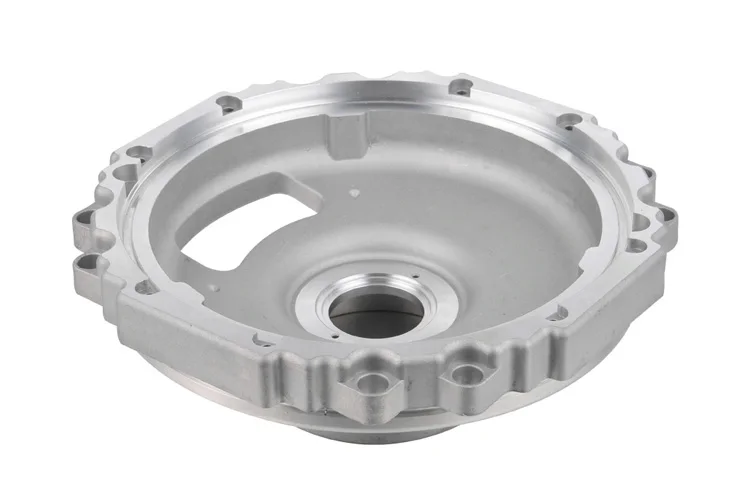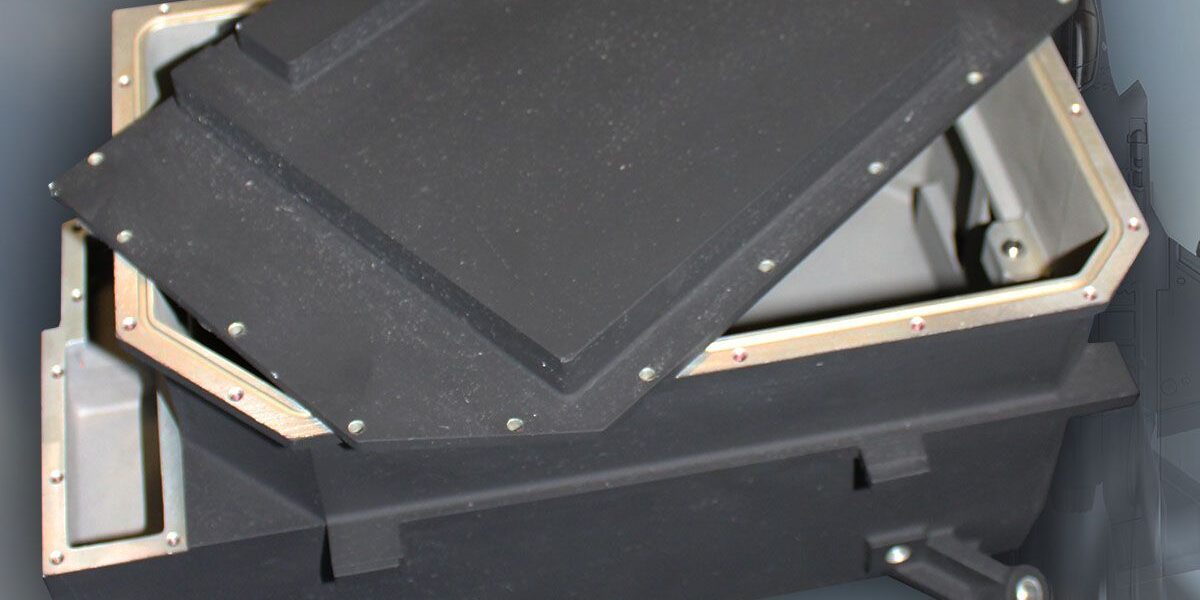Discovering the Cutting-edge Procedures Behind Modern Light Weight Aluminum Factory Procedures
Modern light weight aluminum factory procedures are undertaking significant transformation. Automation and AI are reshaping manufacturing approaches, improving both effectiveness and precision. The integration of 3D printing is streamlining mold and mildew creation, while sustainability methods are ending up being much more essential. Each of these improvements plays an essential role in redefining the market. However, the ramifications of these modifications prolong past simple manufacturing efficiency. What difficulties and chances lie ahead for aluminum foundries in this evolving landscape?
The Duty of Automation in Light Weight Aluminum Foundries

Moreover, automation contributes to boosted safety and security requirements within the foundry setting. By moving harmful tasks to equipments, human employees can focus on managerial functions and high quality control, decreasing the danger of crashes. In enhancement, data analytics stemmed from automated procedures provide valuable insights right into functional efficiency, bring about better decision-making and continuous renovation. As the demand for light weight aluminum items grows, the fostering of automation technologies will likely increase, additionally changing the landscape of aluminum foundry procedures.
Innovations in Casting Technologies
Recent advancements in casting innovations are transforming aluminum foundry procedures. Technologies such as 3D printing integration, advanced alloy formulations, and automated procedure optimization are improving effectiveness and product quality. These advancements are essential in meeting the advancing demands of the market.
3D Printing Assimilation
Incorporating 3D printing innovation right into aluminum factory procedures has reinvented conventional casting methods, enhancing both efficiency and accuracy. This ingenious approach permits the rapid production of intricate mold and mildews and cores, greatly minimizing preparations and material waste. By using additive production, factories can produce detailed geometries that were previously difficult or impossible to achieve with traditional methods. The flexibility of 3D printing additionally enables fast layout adjustments, fostering an extra agile manufacturing process. Furthermore, this combination supports using lightweight structures, which is increasingly important in sectors such as automotive and aerospace. As aluminum foundries continue to take on 3D printing, they place themselves at the center of technical innovation, driving renovations in item quality and operational abilities.
Advanced Alloy Formulations
The development of innovative alloy formulas has considerably boosted spreading modern technologies in aluminum shop operations. These solutions integrate various components, such as copper, magnesium, and silicon, to improve mechanical properties and thermal resistance. By customizing the make-up of aluminum alloys, makers can accomplish details efficiency attributes that fulfill the demands of diverse applications, from auto parts to aerospace frameworks. Using innovative alloys also contributes to reduced weight and increased strength, which are essential consider modern-day engineering. Furthermore, innovations in alloy development make it possible for much better fluidness throughout spreading, leading to boosted surface area coatings and decreased flaws. In general, progressed alloy formulations represent a substantial leap onward, positioning light weight aluminum shops to satisfy the advancing demands of various sectors efficiently.
Automated Refine Optimization
Innovations in casting innovations have paved the way for automatic procedure enhancement in light weight aluminum shop operations. By integrating advanced software program and real-time information analytics, factories can now streamline manufacturing procedures and improve top quality control. Automated systems monitor variables such as air conditioning, stress, and temperature rates, enabling immediate modifications that decrease defects and waste. Furthermore, equipment discovering algorithms analyze historic efficiency information to forecast excellent settings, thereby enhancing effectiveness and lowering cycle times. Robotics likewise play a significant duty, taking care of repeated tasks that boost safety and accuracy. Overall, these developments not just drive operational efficiency but also make it possible for factories to fulfill the growing need for high-quality light weight aluminum parts in various markets.
Smart Production and Sector 4.0 Assimilation
The assimilation of Smart Manufacturing and Sector 4.0 within aluminum foundries is transforming operational effectiveness. By leveraging IoT innovations, automation, and robotics, factories can optimize manufacturing procedures and reduce downtime. In addition, information analytics offers vital insights that improve decision-making and drive continuous renovation.
IoT in Factory Operations
As makers progressively embrace the Web of Things (IoT), foundry procedures are experiencing a transformative shift in the direction of clever manufacturing and Industry 4.0 assimilation. aluminum casting. IoT modern technologies enable real-time information collection and analysis, enhancing decision-making processes and operational effectiveness. Sensors and connected tools keep an eye on devices performance, material use, and ecological problems, enabling aggressive upkeep and source optimization. This connectivity fosters a much more dexterous production setting, where adjustments can be made quickly in action to market needs. Additionally, IoT facilitates improved traceability and quality assurance, as information from the entire manufacturing cycle can be conveniently accessed and evaluated. In general, the assimilation of IoT in shop operations considerably enhances performance and drives advancement in light weight aluminum manufacturing processes
Automation and Robotics Combination
Automation and robotics assimilation is transforming light weight aluminum shop operations by enhancing effectiveness and precision. This transformative technique streamlines procedures such as molding, putting, and finishing, decreasing human mistake and raising output uniformity. By using innovative robot systems, factories can attain greater production prices while keeping strict top quality criteria. Automated systems additionally enable real-time tracking and adaptive control, enabling swift changes to manufacturing specifications. Additionally, the integration of robotics lessens labor prices and reduces safety risks connected with hands-on handling of molten metal. As shops welcome wise manufacturing principles inherent in Market 4.0, the synergy in between automation and robotics solidifies their one-upmanship, leading the way for lasting development and innovation in the aluminum casting sector.
Information Analytics for Effectiveness
Taking advantage of data analytics significantly enhances performance within aluminum factory operations, straightening with wise next page production and Industry 4.0 principles. By leveraging real-time information collection and evaluation, factories can monitor manufacturing processes, forecast tools failings, and enhance resource allocation. This data-driven approach helps with informative decision-making, allowing supervisors to determine traffic jams and improve operations. Additionally, anticipating analytics empowers factories to anticipate market needs, thereby decreasing waste and ensuring timely item delivery. Integration of information analytics with IoT tools enhances operational visibility, cultivating a proactive upkeep society. Ultimately, carrying out these sophisticated logical methods not only increases productivity but also drives advancement, placing aluminum shops to fulfill the developing needs of the industry while preserving one-upmanships in a quickly altering landscape.
Sustainable Practices in Light Weight Aluminum Casting
While the light weight aluminum spreading market has actually typically faced environmental difficulties, numerous factories are currently embracing sustainable techniques to mitigate their effect (Precision aluminum casting). A considerable focus has been on reusing light weight aluminum scrap, which not just reduces waste yet additionally saves energy contrasted to key light weight aluminum production. Ingenious melting technologies, such as induction heaters, enhance power effectiveness and lower greenhouse gas discharges
Furthermore, foundries are carrying out closed-loop water systems to lessen water consumption and lower thermal air pollution. Using environment-friendly binders in mold-making procedures is obtaining grip, further lowering harmful exhausts.
In addition, some facilities are buying renewable power sources to power procedures, lining up with worldwide sustainability objectives. By incorporating these practices, the aluminum casting sector is evolving toward an extra eco liable future, demonstrating that financial development can exist together with eco-friendly stewardship - Aluminum Casting Company. These efforts mirror a dedication to sustainability and the value of environmental accountability in production
Quality Assurance Innovations
As the aluminum casting market advancements towards sustainability, the value of high quality control innovations comes to be increasingly evident. Modern light weight aluminum factories are embracing sophisticated technologies to improve their quality control processes. Methods such as real-time surveillance and information analytics allow makers to detect problems and inconsistencies early in the production cycle. Applying automatic examination systems furnished with machine learning formulas assurances that items fulfill rigorous quality requirements while decreasing human mistake.
In addition, the integration of non-destructive testing methods, such as ultrasonic and radiographic examinations, offers much deeper insights right into the stability of castings without damaging the material. These developments not just improve product dependability but likewise lower waste, lining up with sustainability goals. On top of that, the fostering of standard high quality frameworks aids simplify procedures throughout various foundries, guaranteeing uniformity in outcome. Collectively, these developments are reshaping quality control, promoting a culture of quality within the light weight aluminum spreading sector.
Future Trends in Light Weight Aluminum Shop Operations
What innovations exist ahead for light weight aluminum factory operations? The future of light weight aluminum factories is positioned for change through developments in automation, man-made intelligence, and lasting practices. The integration of robotics and automated systems is expected to boost efficiency and accuracy in the casting processes, decreasing human mistake and labor prices. Furthermore, AI-driven analytics will certainly allow real-time surveillance and anticipating maintenance, enhancing functional performance and lessening downtime.
Sustainability remains a centerpiece, with shops progressively adopting environmentally friendly practices, such as using recycled aluminum and creating low-emission melting modern technologies. Advancements in 3D printing are additionally expected to change mold-making, enabling for intricate geometries and lowered product waste. As the market welcomes digitalization, data-driven decision-making will certainly end up being critical, allowing shops to react swiftly to market needs. Jointly, these trends assure to redefine aluminum foundry operations, making them more effective, lasting, and versatile to future difficulties.

Frequently Asked Questions
What Precaution Are Executed in Light Weight Aluminum Factory Workflow?
Aluminum shop procedures apply numerous safety actions, including individual protective devices, air flow systems to manage fumes, routine security training, emergency situation reaction plans, and stringent tracking of temperature level and equipment to stop crashes and warranty employee safety.
Just How Do Foundries Manage Labor Force Training for New Technologies?

What Materials Are Generally Reused in Aluminum Foundries?
Light weight aluminum foundries typically recycle scrap light weight aluminum, consisting of post-consumer items like beverage containers, automotive parts, and building and construction products. This recycling procedure lowers waste and saves resources, adding to a more lasting aluminum production industry.
Just How Does Aluminum Casting Influence the Setting?
Light weight aluminum casting impacts the environment with energy-intensive procedures, greenhouse gas exhausts, and possible local air pollution. Nonetheless, innovations in reusing and sustainable practices can mitigate these effects, promoting a more environment-friendly strategy to aluminum production.
What Are the Normal Lead Times for Aluminum Spreading Projects?
Common lead times for aluminum casting tasks differ significantly, typically varying from 2 to 6 weeks. Variables influencing these timelines include intricacy, order size, and product accessibility, affecting overall production timetables in factory operations.
Automation significantly plays a necessary duty in light weight aluminum shops, boosting effectiveness and accuracy in the manufacturing procedure. Developments in casting modern technologies have led the means for automatic process improvement in aluminum factory procedures. Utilizing information analytics considerably boosts effectiveness within aluminum foundry procedures, lining up with clever production and Sector 4.0 principles. A significant emphasis has actually been on recycling aluminum scrap, which not only decreases waste but likewise saves power contrasted to primary learn the facts here now light weight aluminum manufacturing. Light weight aluminum shops generally recycle scrap aluminum, consisting of post-consumer products like drink cans, automobile parts, and building materials.